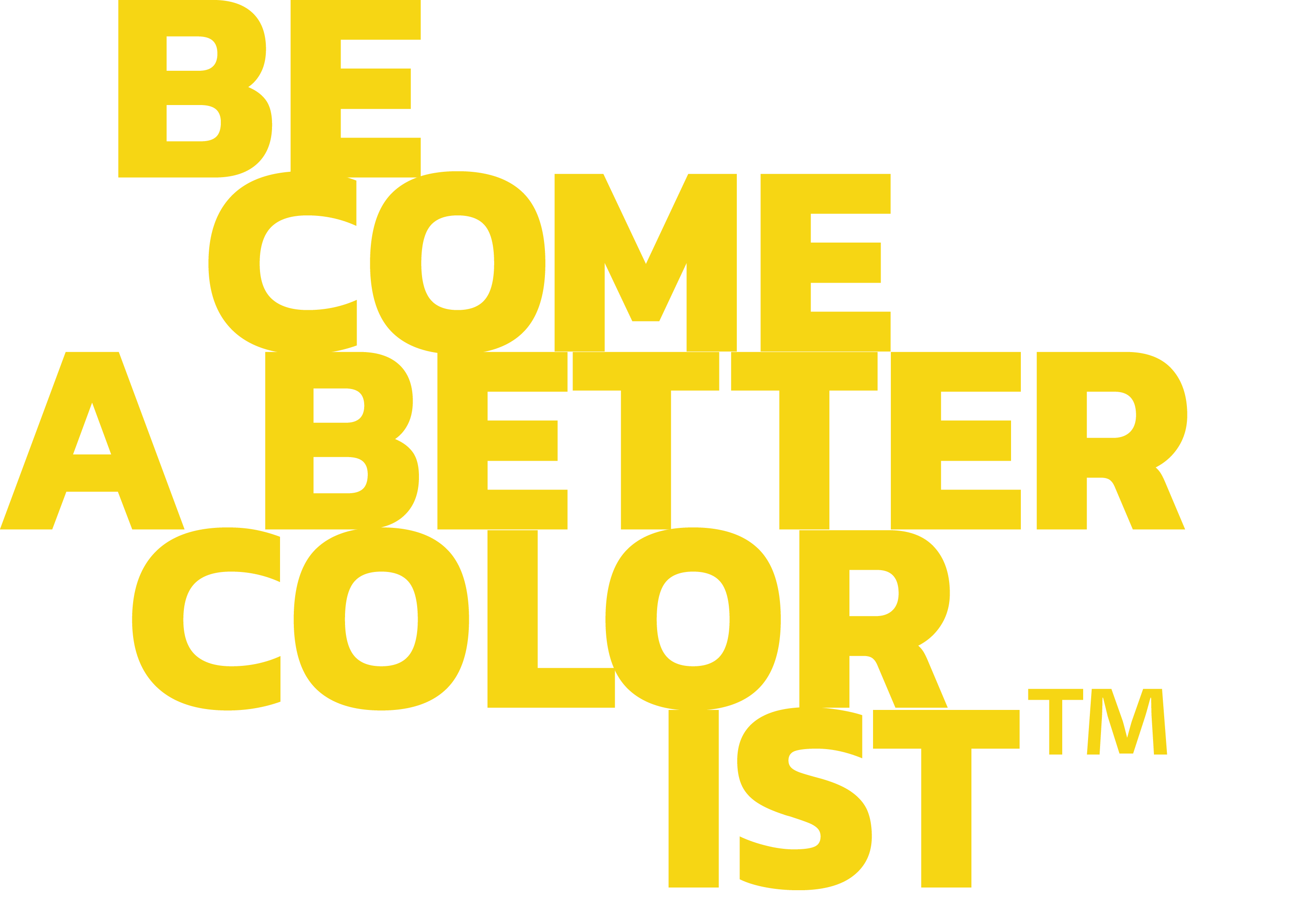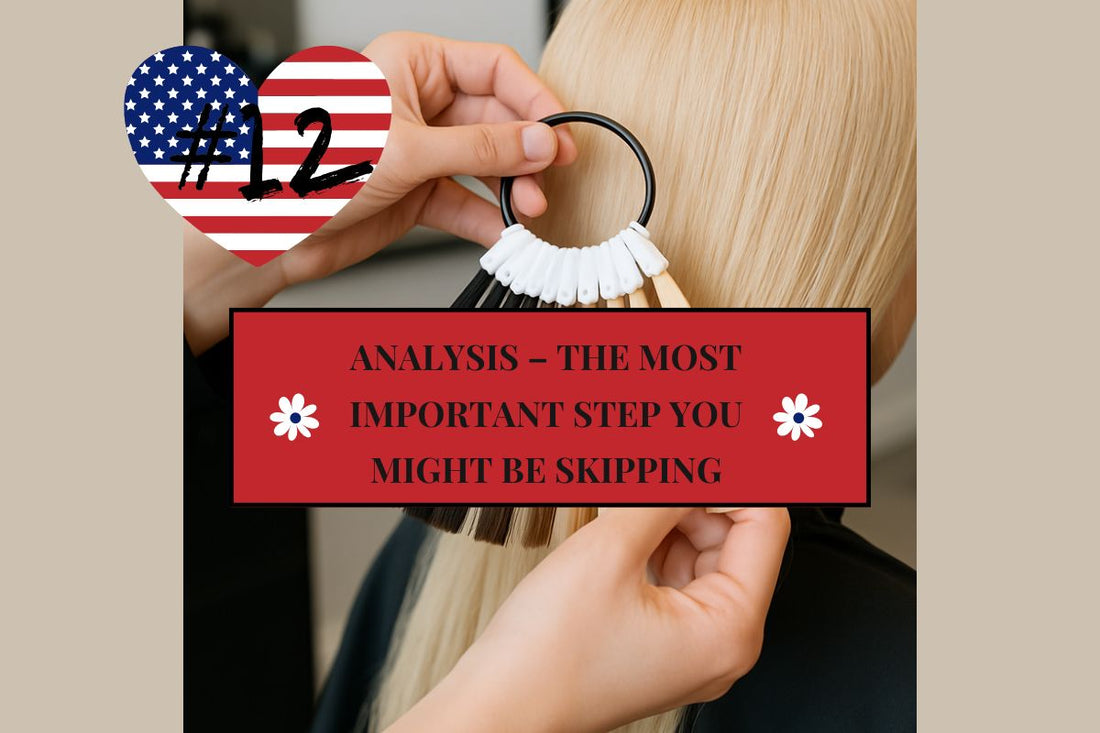You might think you're analyzing – but are you really?
Let’s be honest.
You might think you're doing a good analysis. You might even think you're great at analyzing hair.
But you know what?
Most people aren’t. They think they're analyzing – but really, they're just having a consultation. And sometimes not even that, just a friendly chat about what the client has been up to since their last visit.
That might be nice – but it has nothing to do with a professional color service.
And what’s even worse?
Many don’t even know the difference between a consultation and an analysis.
A nice consultation is not the same as an analysis
Many hairdressers are social, good listeners, and make the client feel seen – and that’s great. It’s an important part of the client experience.
But that’s not what determines the color result.
A consultation often includes:
-
What would you like to do today?
-
What have you done with your hair previously?
-
How do you care for your hair?
-
Do you want to go lighter or darker?
-
Do you want something warm or cool?
But a real analysis requires more than that.
It’s not just a review of desires.
It’s an assessment of the hair as material. Of facts. Of chemistry. Of conditions and limitations.
And that’s exactly where many fail.
What often gets missed in an analysis
What really needs to be properly assessed – is most often completely overlooked.
-
current lightness level
-
tone
-
percentage of white hair
-
hair quality and texture
-
underlying pigments – either present or missing
And then we stand there afterward, frustrated that the color didn’t turn out the way the client wanted – even though we think we “did everything right.”
But we didn’t.
We skipped the most important step.
We didn’t think. We didn’t analyze. We went with our routine – and called it a consultation.
Do you want to become an expert – or keep guessing?
If you truly want to improve, start by understanding the difference between consultation and analysis:
Consultation = The conversation. The client talks. You listen. You discuss goals, expectations, history, and how the client cares for their hair.
Analysis = Your job. You assess the actual condition of the hair. You determine what’s possible. You make decisions – based on knowledge, not gut feeling.
And let me be even clearer:
You need to master both.
Being charming isn’t enough. Trusting your intuition isn’t enough.
Being creative and skilled with a brush isn’t enough – if you don’t know what you’re working with.
It’s the analysis that determines if the color service will succeed – not the product
It doesn’t matter how expensive your color is, how trendy your technique is, or how many followers you have on Instagram.
If you don’t have control during the consultation and don’t perform a proper analysis – you’re just a doer. Not an expert.
That’s why you need a levelfinder – and not just any kind
You cannot do a correct analysis by eye. Period.
Still, many hairdressers take a guess – or say they “can see” the level.
But you can’t. Not with certainty.
Judging lightness by feel is like guessing colors in a dark room.
A levelfinder is your most important tool during the analysis. Not because you lack vision – but because you need to confirm what you see with something physical. Something objective. Something you can show the client.
But it has to be the right levelfinder:
-
It should be based on the hair’s natural undertones, not the manufacturer’s definition.
-
You should be able to hold it next to the hair, not above or behind it.
-
And yes – you must use it every single time.
Even if you "know" the client is a level 7.
Because the hair might be lighter in the lengths, darker in the nape, or prelightened in the front. And it’s precisely that level you didn’t see – that causes the color to go wrong.
You need to identify every level present in the hair.
Not using a levelfinder is like coloring without mixing the color – you’re just guessing.
And at that point, it doesn’t matter how skilled you are with a brush.
A good formula always starts with the right analysis
I often get messages from hairdressers asking for help with formulas.
And the first thing I always ask is: What is the exact starting level?
But when I hear: “Kind of a 6 or maybe 7,” I know immediately that no proper analysis has been done.
Because if you don’t know the exact level – no formula in the world can save you.
Questions you should ask – but might not
Here’s a quick checklist you can start using in your next client appointment.
To the client:
-
What’s most important to you today – tone, feel, longevity, price, or time?
-
Is there anything you absolutely don’t want?
-
How often are you willing to maintain this result?
-
Have you ever been disappointed – and if so, why?
To yourself:
-
What is the current lightness level and tone?
-
What is the desired result – and how far is it from the current state?
-
Am I going lighter? What underlying pigments will I need to deal with?
-
Am I going darker? What pigments are missing that I need to add?
-
What is the hair’s texture?
-
How much white hair is present?
-
How porous is the hair?
-
What extra pigments do I need to add so the color doesn’t turn out flat and dull?
If you don’t have clear answers to these – you’re not ready to mix color.
Analysis is the key to a successful color result
A successful color doesn’t start with the product, the technique, or the trend.
It starts with the analysis.
It’s the analysis that helps you understand what you’re working with.
It’s the analysis that sets the right expectations.
It’s the analysis that allows you to charge properly – because you know what you’re doing.
A poor analysis is often the root of a poor result.
A solid analysis is the foundation of a result that holds – both technically and financially.
One of the most common reasons a client gets disappointed isn’t because the result is bad – but because you misunderstood each other from the start.
Do you want to build a career that lasts – technically, financially, and emotionally?
Do you want every color service you perform to feel confident, professional, and successful?
Then you need to start seeing analysis as your most important skill –
Not something you do in passing.
It doesn’t start with the product. It starts with you.
Do you want to feel truly confident?
Tired of second-guessing every time someone says “ashy” or “beige but not warm”?
Want to stand tall and say no when it won’t work – and yes when you know exactly how to get there?
Then you need more than experience.
You need understanding.
And that’s exactly what you’ll get in Become A Better Colorist.
Read the book. Become the one who truly knows what they’re doing – not just someone who makes it look good.
/Camilla Rörstrand

